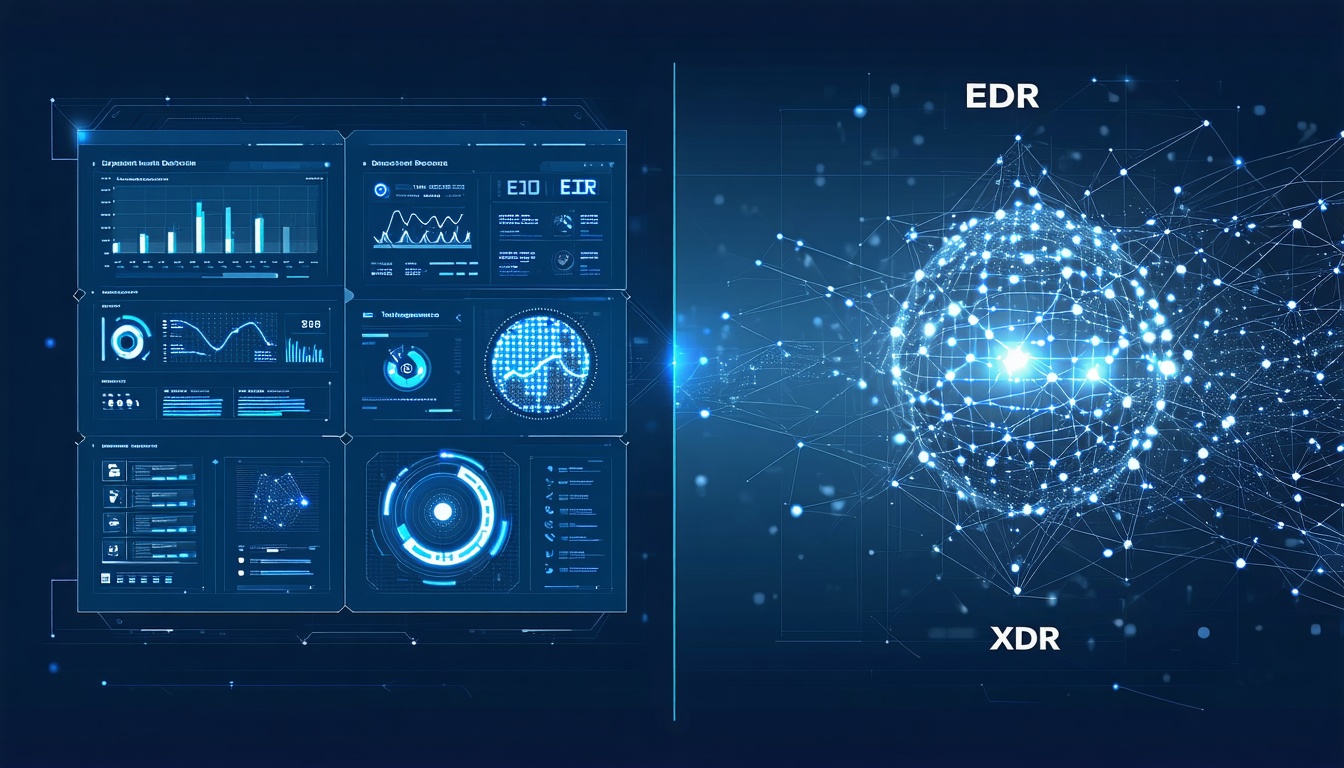Organizations evaluating endpoint protection strategies often face a choice: edr vs xdr. Endpoint detection and response solutions and extended detection and response platforms differ in scope, integration, and operational demands. That’s why selecting the stronger security option requires a clear understanding of core capabilities, deployment models, and strategic outcomes. In this comparison, IT leaders will gain a structured breakdown of both approaches, equipping decision-makers with the insights needed to align security investments with business objectives.
Framing the EDR vs XDR Decision
Adopting an advanced threat detection strategy hinges on organizational context. Businesses with mature security operations may prioritise holistic visibility across networks and cloud environments. In other cases, teams with limited resources may seek a point solution focused on endpoints. From there, factors such as existing toolsets, staffing levels, and incident response workflows guide the final choice.
Key decision factors include:
- Risk profile, including exposure to ransomware and advanced persistent threats
- Integration requirements with SIEM or SOAR systems (see siem vs edr)
- Skills and staffing, including in-house expertise or reliance on managed edr services
- Budget constraints and total cost of ownership over time
In practice, the EDR vs XDR debate often reduces to trade-offs between simplicity and scope, immediate visibility and long-term scalability.
Understanding Endpoint Detection and Response
Endpoint detection and response platforms focus on capturing and analysing activities at the device level. Gartner-coined EDR solutions record endpoint behaviour, apply behavioural analytics, and enable security teams to investigate and contain threats in real time (CrowdStrike).
Core Capabilities of EDR
EDR tools typically provide:
- Continuous monitoring of processes, file changes, network connections, and system events
- Behavioral analytics against Indicators of Attack (IOAs) to flag anomalies
- DVR-style recording via an edr database to support forensic investigations
- Automated containment actions such as endpoint isolation or process termination
- Remediation guidance to restore systems after an incident
Use Cases for Endpoint-Centric Monitoring
Organizations may consider EDR when:
- Endpoint compromise represents the primary threat vector
- There is an existing security stack focused on network and cloud, requiring endpoint augmentation
- Incident response teams need deep forensic data tied directly to device-level events
- Integration with traditional antivirus falls short (see endpoint detection and response vs antivirus)
Exploring Extended Detection and Response
Extended detection and response builds on EDR by correlating data from across the security stack—network sensors, cloud workloads, email gateways, identity systems, and more. XDR platforms aggregate and normalize data to deliver unified threat detection, investigation, and response workflows (Microsoft).
Expanded Visibility Beyond Endpoints
By ingesting telemetry from multiple sources, XDR offers:
- Holistic threat context, identifying lateral movement and cross-vector attacks
- Centralised dashboards that surface high-fidelity alerts across layers
- Enhanced threat hunting capabilities supported by machine learning and heuristics
Automation and Orchestration Features
Automation within XDR may include:
- AI-driven prioritization of alerts to reduce analyst fatigue
- Orchestrated playbooks that trigger workflows across endpoint, network, and cloud tools
- Integration with ticketing and case management systems to streamline incident handling
Comparing EDR and XDR
Below is a high-level comparison of core attributes for each approach:
Data Collection Scope
EDR relies on data from individual devices, whereas XDR platforms ingest a wider array of logs and telemetry. This broader scope can improve detection of complex, multi-stage attacks.
Detection and Analytics
Behavioral analytics at the endpoint are central to EDR. Extended approaches layer on heuristics and machine learning across datasets, reducing false positives and surfacing stealthy threats.
Response and Remediation
EDR tools excel at rapid containment on compromised endpoints. XDR solutions expand the response to network segments or cloud workloads, coordinating actions across security controls.
Scalability and Integration
Integrating an EDR platform often involves agents and a central management console. XDR may require additional connectors but rewards teams with a single pane of glass for all security telemetry.
Weighing Implementation Considerations
Moving from evaluation to deployment demands a realistic view of operational impact.
Resource and Expertise Requirements
- EDR: Requires endpoint management skills and forensic analysts
- XDR: Demands cross-disciplinary security teams and platform administrators
Organizations with limited staff may lean on edr for small business packages or engage managed services.
Deployment and Management Overhead
- EDR: Agent deployment and tuning of endpoint policies
- XDR: Connector configuration, data normalization, and playbook maintenance
In both cases, preconfigured templates can accelerate rollout, but XDR typically involves higher upfront integration work.
Return on Security Investment
Calculating ROI involves:
- Reduction in dwell time and breach impact costs
- Efficiency gains from automated workflows
- Consolidation savings versus multiple point solutions
A clear baseline of incident metrics helps quantify benefits over time.
Key Takeaways and Conclusion
When comparing EDR vs XDR, the choice often aligns with an organization’s maturity and risk appetite. Endpoint detection and response serves as the foundational monitoring layer, offering deep forensic detail and rapid containment. Extended detection and response builds on that foundation to deliver holistic visibility and automated orchestration across the entire security stack.
Businesses may deploy both in parallel, using EDR as the bedrock for endpoint intelligence and XDR to unify telemetry across domains. Ultimately, aligning platform capabilities with staffing levels, existing investments, and strategic objectives ensures that security teams can detect, investigate, and respond to threats with confidence.
Need Help With EDR vs XDR?
Need help with choosing between endpoint detection and response or extended detection and response? We help organizations evaluate requirements, shortlist solutions, and connect with trusted providers. Let’s discuss your security objectives and accelerate the selection process—reach out today to get started.






